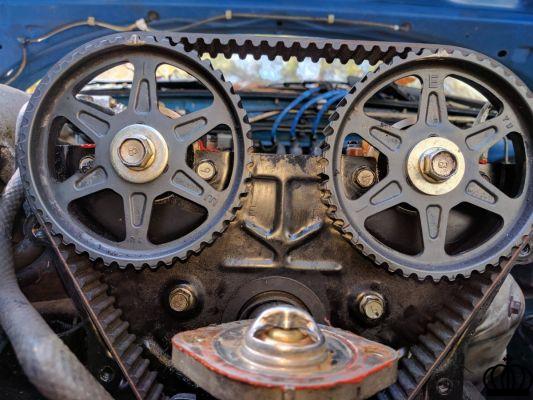
Introduction
Welcome to our article on car belts. In this text, we will answer all your questions about the number of belts a car has, the different types of belts in a common engine, the auxiliary belt and its maintenance, the number of belts necessary for the proper functioning of a car, the engine belts and their maintenance, the car service belt and its function, the timing belts and chains in the engine, and what is the timing belt and how much does it cost to change it. Let's get started!
How many belts does a car have?
The number of belts a car has can vary depending on the model and the type of engine. In general, most cars have at least two belts: a drive belt and an auxiliary belt. The drive belt is responsible for transmitting power from the engine to the wheels, while the auxiliary belt is used to drive secondary engine components such as the alternator, water pump, and air conditioning compressor.
Types of belts in a common engine
In a common engine, we can find different types of belts, each with a specific function. Some of the most common types of straps are:
transmission band
The drive belt, also known as the timing belt, is one of the most important belts in an engine. It is responsible for synchronizing the movement of the valves and pistons, ensuring smooth and efficient engine operation. It is essential to keep this belt in good condition and replace it according to the manufacturer's recommendations.
auxiliary strap
The auxiliary belt, also called the accessory belt, is responsible for transmitting engine power to secondary components such as the alternator, water pump, and air conditioning compressor. This belt should also be checked regularly and replaced if it shows signs of wear or damage.
Belt Maintenance
Proper belt maintenance is essential to ensure proper engine operation and prevent costly breakdowns. Here are some tips for belt maintenance:
regular inspection
It is important to regularly inspect the belts for signs of wear, cracks or damage. If you find any problems, it is recommended to replace the belt immediately.
proper tension
Belts must have the proper tension to function properly. If the belt is too loose, it may slip and cause engine running problems. On the other hand, if the belt is too tight, it can damage engine components. Check your owner's manual or see a professional mechanic to make sure the belts are properly tensioned.
Frequent questions
How much does it cost to change the timing belt?
The cost of changing the timing belt may vary depending on the model and the workshop where the change is made. In general, the price can range between 200 and 500 euros. It is important to remember that changing the timing belt is a task that must be carried out by a professional mechanic, since a bad replacement can cause serious damage to the engine.
What is the useful life of a drive belt?
The useful life of a transmission belt can vary depending on the type of belt and the use of the vehicle. In general, it is recommended to replace the drive belt every 60.000 to 100.000 kilometers or every 5 years, whichever comes first. However, it is important to check your car's owner's manual for specific manufacturer recommendations.
Conclusion
In short, belts play a crucial role in how a car works. From the transmission belt that synchronizes the movement of the valves and pistons, to the auxiliary belt that drives the secondary components of the engine, all belts should be checked regularly and replaced according to the manufacturer's recommendations. Proper belt maintenance is essential to avoid costly breakdowns and ensure optimum engine performance. If you have any additional questions about car belts, feel free to leave us a comment. We will be happy to help you!
Until next time!
The Pistonudos.com team


























